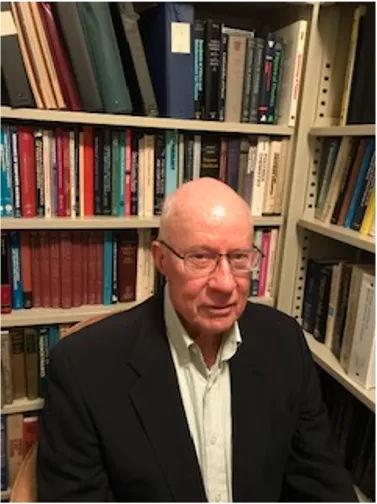When John needed heart surgery, he found an expert he trusted, close to home
Long before undergoing successful surgery at University of Iowa Hospitals & Clinics last February to replace an artery and a valve in his heart, John Kardos of Iowa City already knew a lot about how his heart works.
About 35 years ago, John had been diagnosed with a heart murmur caused by a problem with his aortic valve, the main valve that moves blood from the heart to the rest of the body. A series of tests determined that the problem wasn’t serious. But John wasn’t taking any chances. Over the years, he monitored the valve’s condition with regular checkups and scans.
His diligence in keeping track of his heart isn’t surprising: John, 82, is retired from a 41-year career as a professor of chemical engineering, and his research included studying treatments and technology used to repair the heart.
Artery reaches ‘the danger zone’
In the fall of 2020, John began to feel like he was losing stamina. He visited his cardiologist, who noticed that John’s aorta was stretched and not functioning properly.
“My aorta had dilated to the point where it was in the danger zone,” John says. “We had to do something.”
John’s cardiologist referred him to Arun Singhal, MD, PhD, a UI cardiothoracic surgeon with more than 20 years of experience. When they met to discuss treatment options, Singhal says, John arrived prepared.
“I had a lot of discussions with John that I don’t typically have with other patients,” Singhal says. “He was very interested in how the surgery would work and the technology we’re using.”
After Singhal told John about his treatment options, John chose to have the aorta replaced with a new aorta made of Gore-Tex—the same material used for jackets, gloves, and shoes but with a tighter weave than the material in those consumer products.

Diagnosing a rare, unexpected condition and treating it immediately
During the surgery to replace the aorta, Singhal made a discovery: John had a bicuspid aortic valve—the valve that controls the flow of blood from the heart into the aorta.
A normal heart valve has three leaflets—the flaps that open and close once with each heartbeat. A bicuspid aortic valve has only two leaflets. John’s valve was regurgitating—allowing blood to leak through even when it was supposed to be shut.
A bicuspid aortic valve is a rare condition that affects about 2% of the population. It’s congenital, which means John was born with it. But none of his previous health care providers had diagnosed it. Singhal says John’s overall good health made the condition more difficult to detect.
“John was in better shape than most people who have this rare condition,” Singhal says. “Most people his age with a bicuspid valve are not feeling well or have significant health problems.”
Singhal was able to continue with the surgery as planned, replacing the aorta and treating the bicuspid aortic valve with a special device that surrounds the valve and reshapes it, helping the two leaflets fit together properly so that they can regulate blood flow the way they should.
“The care I got from Dr. Singhal was outstanding,” John says. “He diagnosed the bicuspid valve problem as soon as he saw my heart. Because of his expertise, he was able to use state-of-the-art technology to make a repair and help the valve work just like a normal valve would.”
Getting back to a full life
Recovery from open-heart surgery is a long road. John says his cardiac surgery team made sure he had a comfortable and positive experience every step of the way. And four months after surgery, he was getting back to his normal life.
“The care was outstanding,” John says. “The nurses were all very impressive and dedicated to their job. They even spent time talking to me about my professional background and experience working in chemical engineering. That was nice.”
Learn more about the UI Heart and Vascular Center's heart surgery experts.